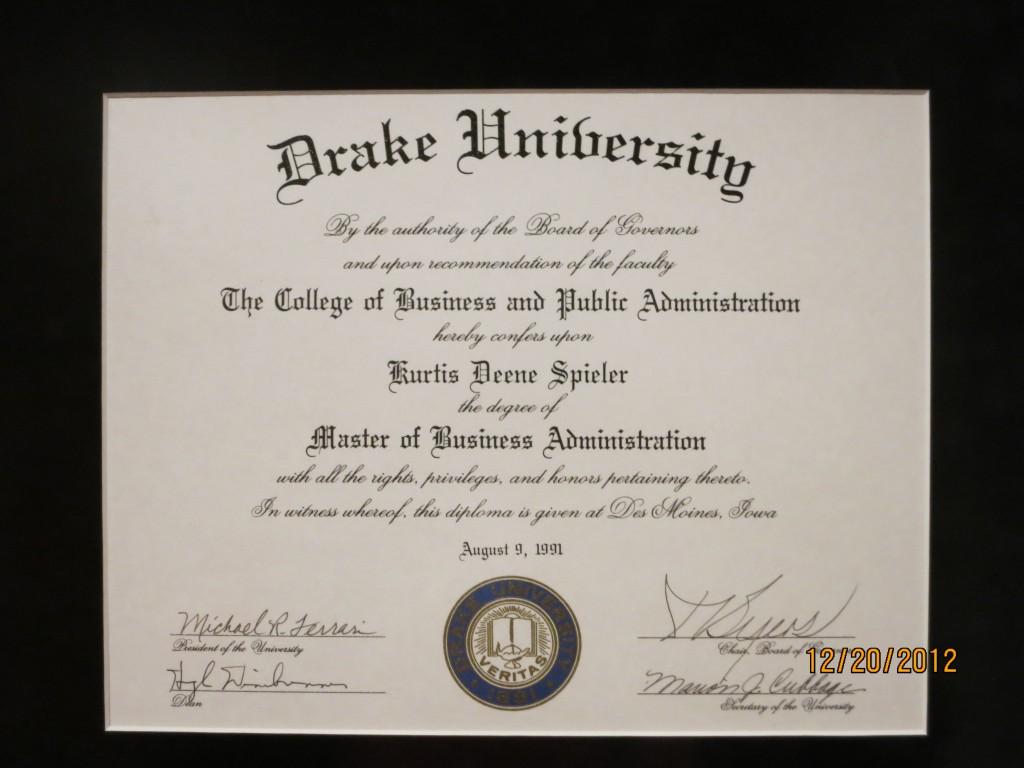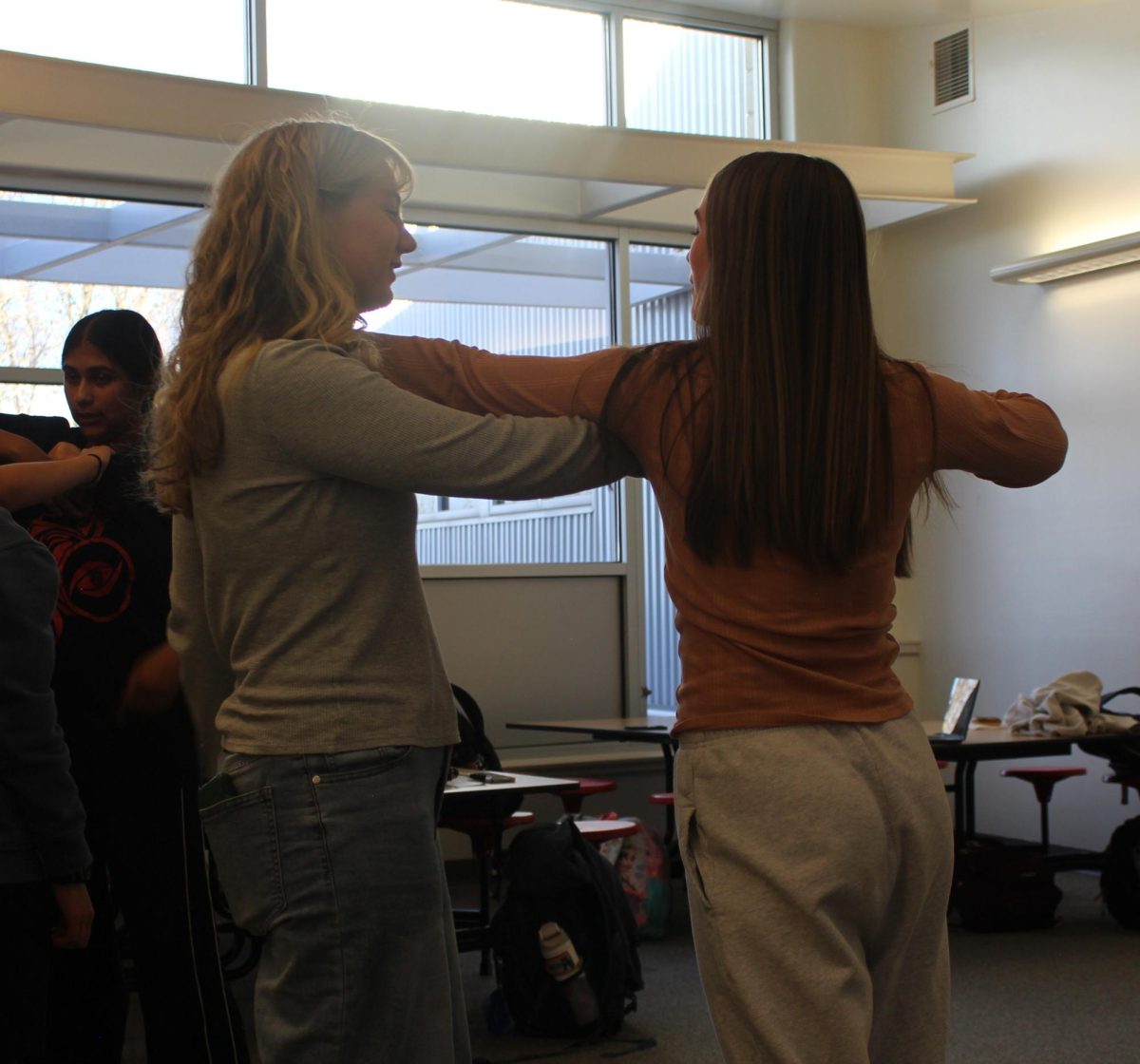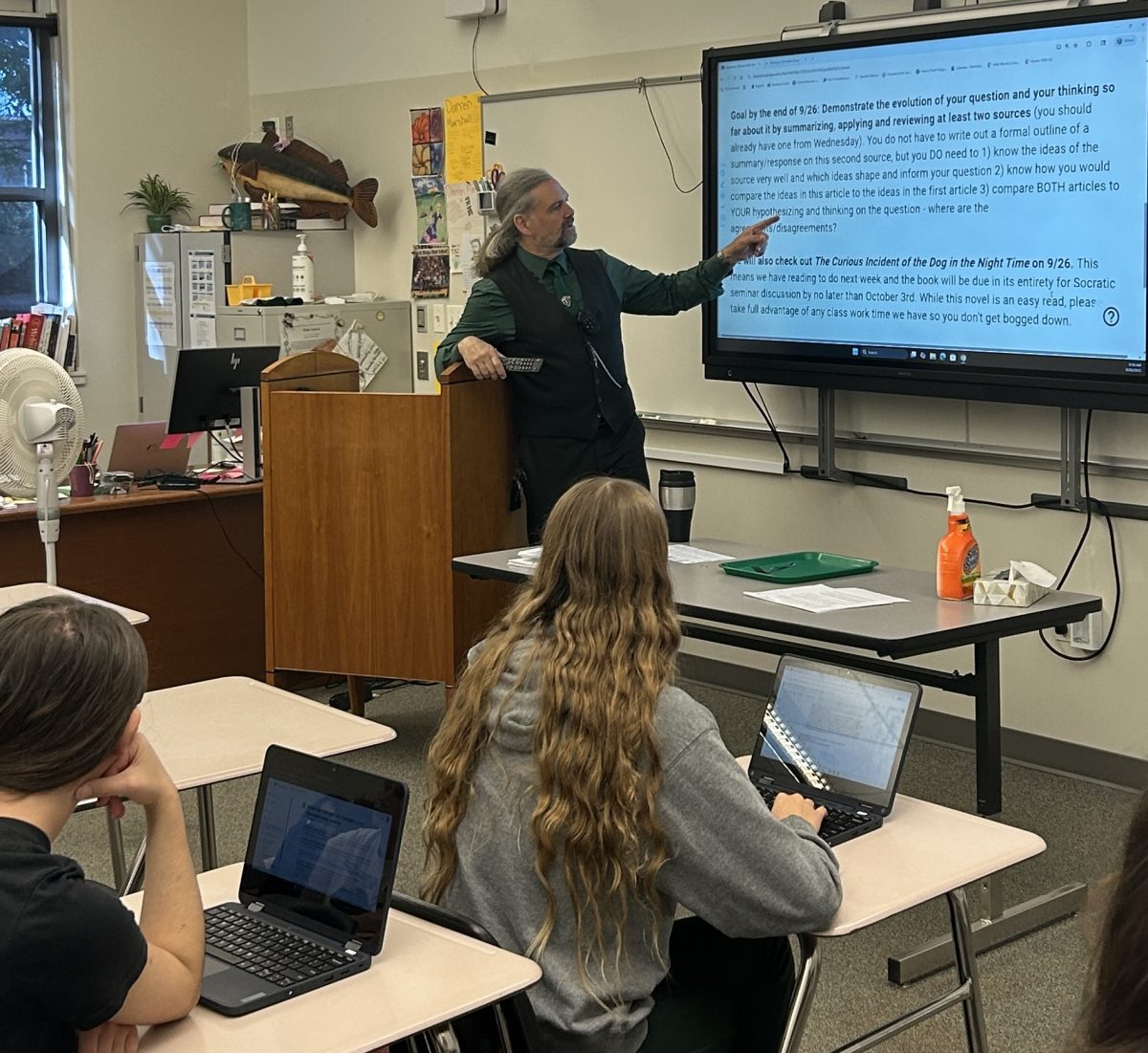[slideshow_deploy id=’6025′]This past year the state of Colorado’s Department of Education voted to implement a new system of teacher evaluations that was beta tested by multiple schools across the state during the 2011-2012 school year. Since this beta testing proved to be mostly successful in the tested schools, the CDE decided to launch a statewide campaign to implement the system into the majority of school districts around the state. The new evaluations require higher regulations and standards that have to be upheld by Colorado teachers, and some educators are apprehensive about the process itself and whether it will accurately depict their ability to teach. Teachers at Fossil Ridge High School are not immune to these worries. Benjamin DeGear is a first-year teacher at FRHS, but has taught in the state of Colorado for 10 years. Prior to working at FRHS, DeGear worked at a high school in Ouray, Colorado, which last year was chosen as a school to participate in the beta testing of this new system. Having already been through the evaluation system, DeGear found that the system can be both a burden and virtue.
“It’s nothing new; it’s just new terms,” DeGear said. With the implementation of the new system, teachers will have adhere not only to the new standards that the CDE has adopted, but the state standards , as well. Each standard that has to be achieved in classroom learning by teachers has its own subcategories that explicitly dictate to teachers what aspects of learning and ideas must be present both in in class learning and out of class application.
The CDE has released not only the rubrics that teachers will be evaluated by, but also how each evaluation will be weighted. Poudre School District will be using a rubric from CEL that is inspired by the five dimensions of teaching and learning framework in order to evaluate teachers. Tanya Alcaraz, a business teacher at FRHS, will have taught in Poudre School District for 14 years in January. When she first began teaching, teachers were formally evaluated during their probationary years, which is their first three years, then they received a formal evaluation every third year from an administrator. This year, with the changes, Alcaraz said she is doing self-reflection when it comes to receiving rubric evaluation. Although she said she has a positive attitude when it comes to the evaluations, she said she still has some apprehensions. “The new expectations for teachers, the rubrics in particular are super detailed; I think that the devil is in the details,” Alcaraz said.
Each new evaluation has two aspects that will ultimately affect a teacher’s final score. The first part of the evaluation will be that the teacher has met the five Quality Standards that measure professional practice. These five standards are: content knowledge, establishing classroom environment, facilitating learning, reflecting on practice and demonstrating leadership. All of these standards’ effective implementation will be determined through the state-released rubric for each section. Although these are the standards for the statewide campaign, the CEL evaluates teachers on six areas of performance which are: Purpose, Student Engagement, Curriculum and Pedagogy, Assessment for Student Learning, Classroom Environment and Culture, and Professional Collaboration and Communication.
The other half of the evaluation will be based on students’ academic growth. Student academic growth will be assessed from year to year. If the subject area has a statewide summative exam, then student academic growth and learning will be representative of student achievement on those tests. For Alcaraz, the integration of student academic growth in evaluations is new. “We have common district assessments, we have standards, and I know what my students need to be able to do,” said Alcaraz about how the evaluation will help create core values in elective classes.
Though the implementation of the new evaluation system statewide is another test in order to determine its success, and whether or not it will be used in the long run, teachers are seeing many changing aspects in their classrooms this year. Now as students walk into the classroom, every student must know what the learning target is for the day and how they can measure their understanding through the success criteria. “The concept in having a clear goal in what students are learning makes sense,” DeGear said.
This system was implemented to effectively and timely evaluate teachers. There are three basic purposes to this new system of evaluation; the purposes listed below were released from the CDE:
To ensure that all licensed personnel are evaluated using multiple, fair, transparent, timely, rigorous and valid methods, 50 percent of which is determined by the academic growth of their students
To ensure that all licensed personnel receive adequate feedback and professional development support to provide them a meaningful opportunity to improve their effectiveness
To ensure that all licensed personnel are provided the means to share effective practices with other educators throughout the state
These objectives will allow administrators and district officials to further evaluate a teacher’s ability and effectiveness in the classroom, as well as give teachers the opportunity to give feedback. Each rubric is graded on a scale provided with in-depth details about how a teacher meets the basic requirements and how she excels beyond that. The five grading abilities given for teachers span from basic, which is below state Quality Standards, to exemplary, which exceeds state Quality Standards. CEL rubrics grade on a scale from ineffective to highly effective. “Good teaching has always been good teaching,” DeGear said.
For further information and details pertaining to the new system and the rubrics for evaluation, visit the Colorado Department of Education website.













